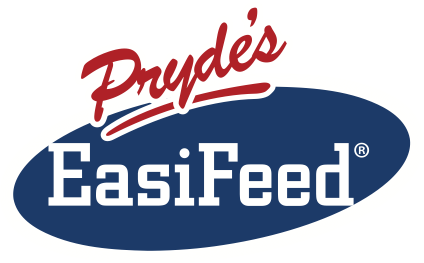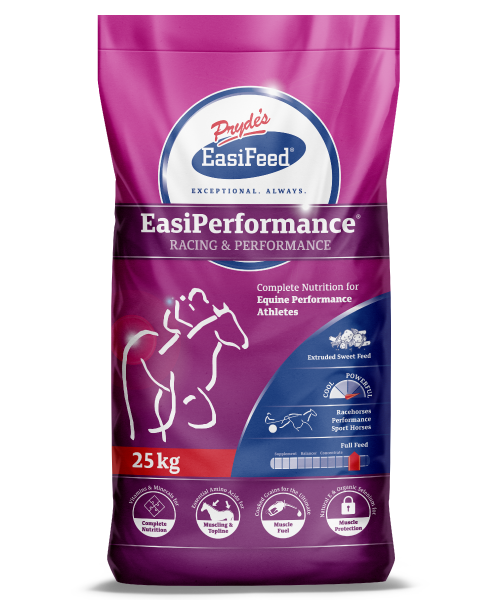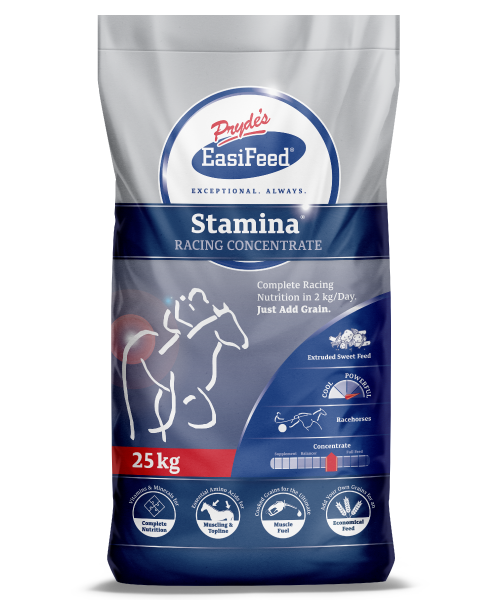Talk to any trainer and they will tell you that getting horses to eat is sometimes their greatest challenge. Horses can go off their feed for any number of reasons with a loss of appetite often seen more commonly in horses in the later stages of a racing campaign. We all know the old saying ‘you can lead a horse to water, but you can’t make him drink’, but the same needn’t apply to feed. While we can’t make a horse eat there are certainly things you can do to maintain or improve appetite. The following article looks at some of these strategies in detail.
Feed plenty of forage
Vitamin B1 (thiamine) is needed to maintain appetite in horses and it is well documented that a vitamin B1 deficiency will cause a loss of appetite in many species of animals. While Vitamin B1 is added to most feeds and supplements horses also rely on the bacteria in their hindgut to produce a large portion of their daily requirement of this vitamin.
To produce vitamin B1, the hindgut bacteria need fibre to ferment and fibre is supplied by forages including hay and chaff. As a rule you should feed an absolute minimum of 1% of a horse’s bodyweight in hay and/or chaff per day, which equates to around 5 kg/day for the average sized thoroughbred (this can be reduced in the 2 days leading up to a race). Feeding enough forage will improve vitamin B1 production and help to maintain or re-establish a good appetite.
Don’t feed uncooked corn or barley
Feeding uncooked (whole or cracked) corn and barley will result in a majority of the starch from these grains being dumped into a horse’s hindgut. The starch is rapidly fermented by bacteria that live there and during this fermentation process a compound called thiaminase is produced. Thiaminase destroys any vitamin B1 in the hindgut before it can be absorbed by the horse ultimately resulting in a vitamin B1 deficiency and a loss of appetite.
Feeding cooked grains means the starch in the grains will be digested in the horse’s small intestine, thereby reducing or preventing the production of thiaminase. If you are feeding uncooked corn or barley and your horses have manure that smells acidic (like vomit) try switching your grains to cooked grains to improve appetite.
Don’t oversupplement
Sometimes horses go off their feed simply because their feed doesn’t taste nice. Feeds that are too salty from salt and electrolytes or too heavily laced with B-vitamin supplements are notoriously unpalatable, so when it comes to adding supplements, add only what your horse needs. If you are not sure what your horses do or don’t need, seek professional help from a qualified nutritionist to put together a balanced yet simple and tasty diet.
Also use trial and error on horses with poor appetites to work out if there is a particular feed or supplement the horse doesn’t like. Start with a very simple ration with just one or two ingredients you know it will eat and then gradually add extra feeds or supplements to it until you find one or more that the horse would prefer not to eat.
Watch out for mould
Moulds in hay and grains can produce toxic compounds called mycotoxins. One side effect of mycotoxin consumption is a loss of appetite. Carefully screen your hay and buy chaff and grains from a trusted supplier to avoid mould in your feeds.
Processed feeds that are not manufactured correctly (for example they may be bagged too moist or stored in damp conditions) are also prone to mould growth and are a potential source of mycotoxins. Be sure to buy feeds from a trusted manufacturer who makes their feeds under strict quality control standards.
Of course it is not always possible to avoid all mould as some moulds aren’t obvious to the human eye or nose. If you are having problems with loss of appetite and have ruled out other causes, you might consider having your feeds and forages screened for mycotoxin contamination. There are also mycotoxin binders available on the market that may help. Ask your feed supplier or nutritionist for their recommended product.
Avoid ulcers
Horses with gastric ulcers tend to go off their feed. The saying ‘prevention is better than cure’ certainly applies to ulcers, so feeding plenty of hay, keeping a horses environment as stress free as possible (including keeping talkback or racing radio to a minimum in the stables) allowing turnout time if possible and feeding a small amount of lucerne immediately prior to training will all help to prevent ulcers. Of course if a horse already has ulcers you should work with your veterinarian to resolve them as quickly as possible.
Don’t medicate feeds
We all know most medications taste horrible and we certainly wouldn’t like it if someone was mixing medicine through our dinner. If you are using medications it is best to keep them out of the feed bin as you don’t want your horse associating feed time with foul tasting medications.
Cleaning Up
It isn’t always going to be possible to determine why certain horses go off their feed. Likewise it isn’t always going to be possible to get a horse back onto feed without giving it a spell. But if you feed enough hay and chaff, use cooked grains, don’t add unnecessary supplements to feeds, manage your horses to reduce the risk of ulcers and keep medications out of the feed bin you will make sure that you aren’t disrupting the gut in a way that causes a horse to go off its feed and keep your feeds tasty. Those factors combined will give you the best chance of having horses that will lick their feed bins clean.
The Pryde’s EasiFeed range of quality feeds includes EasiPerformance and Stamina. These feeds are designed specifically for racing thoroughbreds with extruded (cooked) grains to keep the hindgut healthy. Pryde’s feeds are also designed with taste in mind. EasiPerformance and Stamina both contain honey and they are fortified with all the vitamins and minerals racing horses need including electrolytes and antioxidants, meaning you don’t need to add anything extra, so your feeds will stay nice and tasty. All Pryde’s feeds are manufactured under the strictest quality control measures with moisture content stringently controlled to prevent mould.
Pryde’s EasiFeed recommend the following diets for racing thoroughbreds. Diets are based on a 500 kg horse in full work:
Complete SweetFeed + EasiOil
Concentrate SweetFeed + EasiOil + Grains
With feeds and supplements to suit any preferred method of feeding, contact Pryde’s EasiFeed for a full assessment of your race feed regime. Call 1300 732 267, email info@prydes.com.au or visit our Feed Selector
Dr Nerida Richards
Equilize Horse Nutrition Pty Ltd





